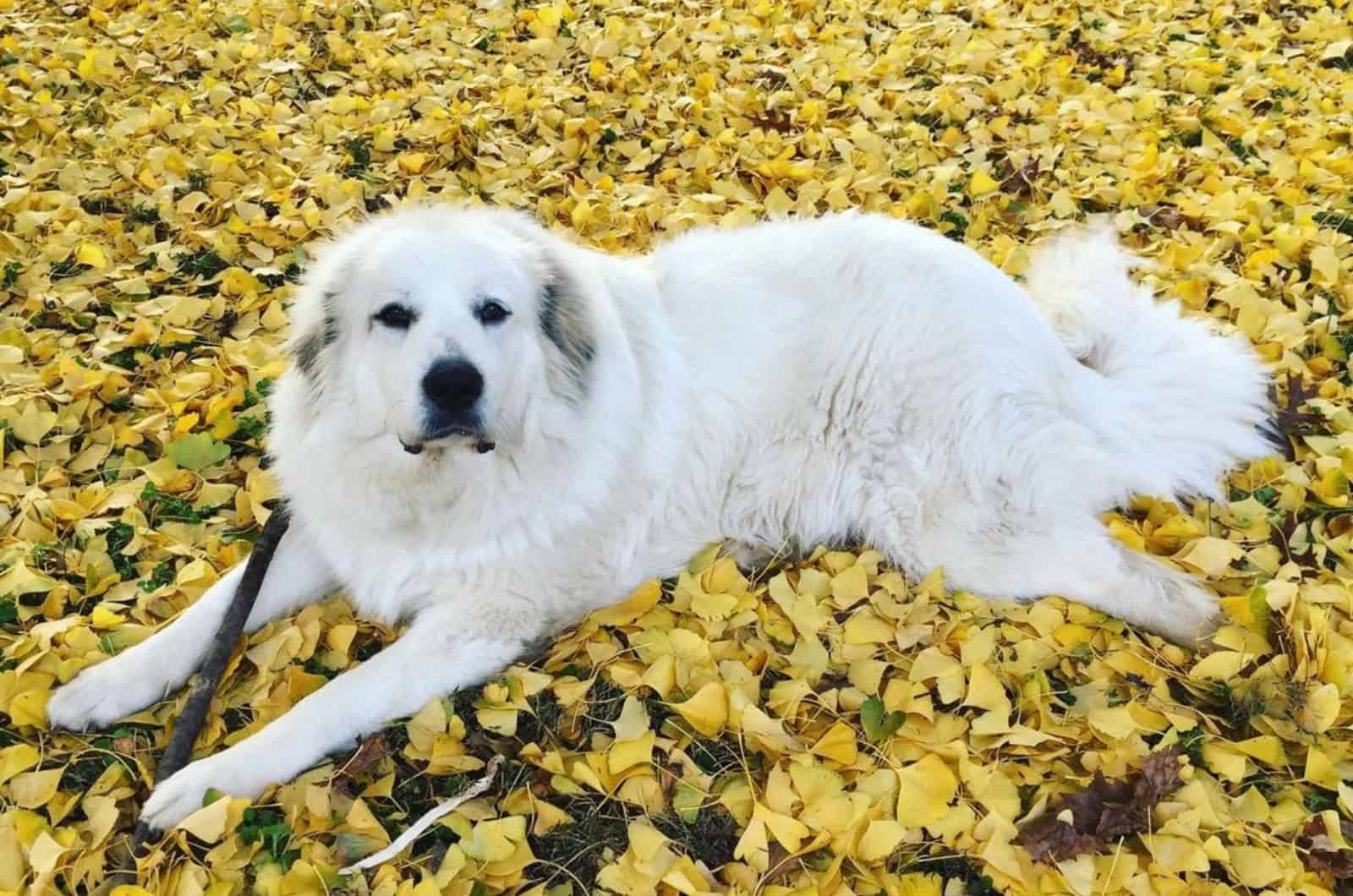Only a genius would come up with an idea this amazing! Breeding two excellent dog breeds together, that have similar physical and personality traits, was definitely a great thing to do.
This dog breed is known for its huge personality and heart. Both of these canines will satisfy your needs if you’re looking for an affectionate, easy-to-train large dog breed.
Unless you’re a dog breed lover, you might not realize a lot about each breed or how they are in particular areas like grooming, wellness, and temperament. Fortunately for you, we’ve already done the research and compared every crucial characteristic of the Great Pyrenees
Newfoundland mix.
What Is A Great Pyrenees Newfoundland Mix?
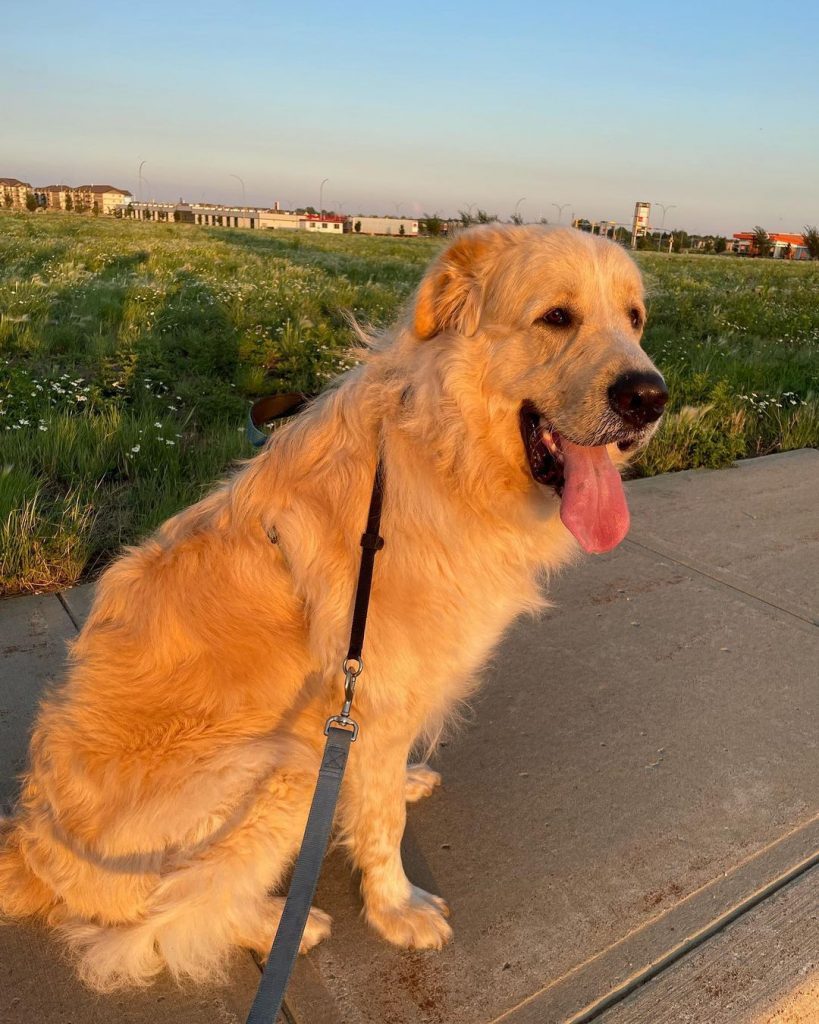
The Great Pyrenees Newfoundland mix is everything but a small dog breed that doesn’t shed a lot.
The Great Pyrenees Newfoundland mix, on the other hand, is a large dog breed which proudly carries the genes of two famous purebred dog breeds.
Aside from that, this dog breed is known as the gentle giant. And it isn’t called as such without a reason. These large dogs are one of the best dogs that a family can own.
Yes, this is a giant dog breed, but you will see that they don’t necessarily feel as such. They will always remain silly puppies in their core, as well as huge couch potatoes.
They are the type of dogs that cannot comprehend their giant size, which means that even when they become fully grown, they will love to sit on your lap as much as they loved it when they were puppies.
Origin Of The Great Pyrenees Newfoundland Mix
The two dog breeds, which were combined to create this hybrid, have many characteristics in common. They are both quite kind and submissive. Some people even think that these two dog breeds are kin!
Whatever is the case, these two dog breeds are inevitably similar by many traits. They don’t even have very different temperaments. They may have a common ancestor.
However, no evidence could be found to give us an idea of when this dog breed has seen the light of the day. There are not any official or unofficial records. Therefore, it would be hard to decide when and how the Newfoundland Great Pyrenees Mix originated.
History Of The Newfoundland Dog
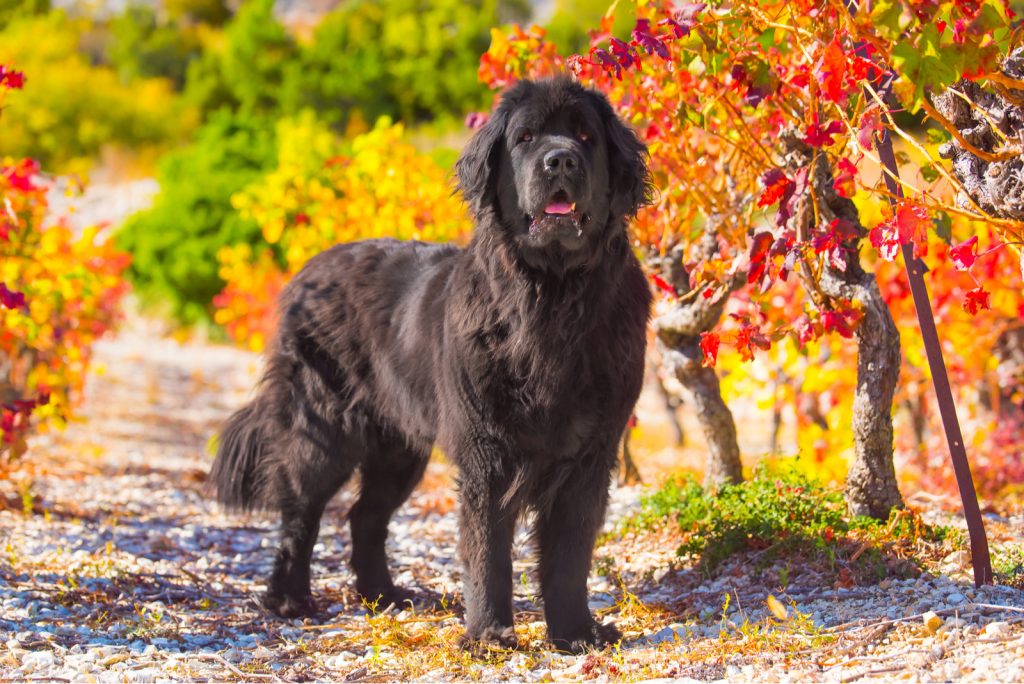
Fishermen and sailors of Ireland and England visited Newfoundland’s Grand Banks in the early 1880s, and there they wrote about two major categories of working dogs. One was a massive, powerfully built dog with such a lengthy coat, while the other was a water dog with smooth hair that was lively. The Greater Newfoundland, or Newfoundland, was the name of the heavier breed.
The smaller kind was referred to as the St. John’s water dog or the Lesser Newfoundland. The contemporary retrievers’ ancestor breed is the St. John’s water dog. Both types were employed as working canines for hauling carts and other equipment, as well as for pulling nets.
Theoretically, the smaller landrace was mated with Mastiffs when it was sold to the English, and the English version was promoted into becoming what we now think of as a Newfoundland. This hypothesis supports the theory that the original Newfoundland that resided on the island was smaller.
What Two Breeds Make A Newfoundland?
The St. Bernard and English Mastiff, as well as other mastiffs and Molosser-type dogs, share many physical characteristics with the Newfoundland, including powerful legs, enormous heads with extremely broad snouts, a strong bull-like neck, and a highly solid bone structure.
Newfoundlands are a common ancestor of St. Bernards. In the 18th century, when the population was in danger from an outbreak of canine distemper, Newfoundlands were brought in and mixed to the St. Bernard breed. They resemble numerous cattle guarding dog breeds, including the Great Pyrenees, in many ways.
According to a genome investigation, Newfoundlands are linked to Labrador Retrievers, Curly-Coated Retrievers, and Irish Water Spaniels. The Newfoundland was initially developed and employed in Newfoundland as a working dog.
Aside from being connected to the above mentioned breeds, the genetic research says differently. Later, the breeders made a cross between the St. John’s Water Dog with Mastiffs, and they created the Newfoundland dog that we know of today.
History Of The Great Pyrenees Dog
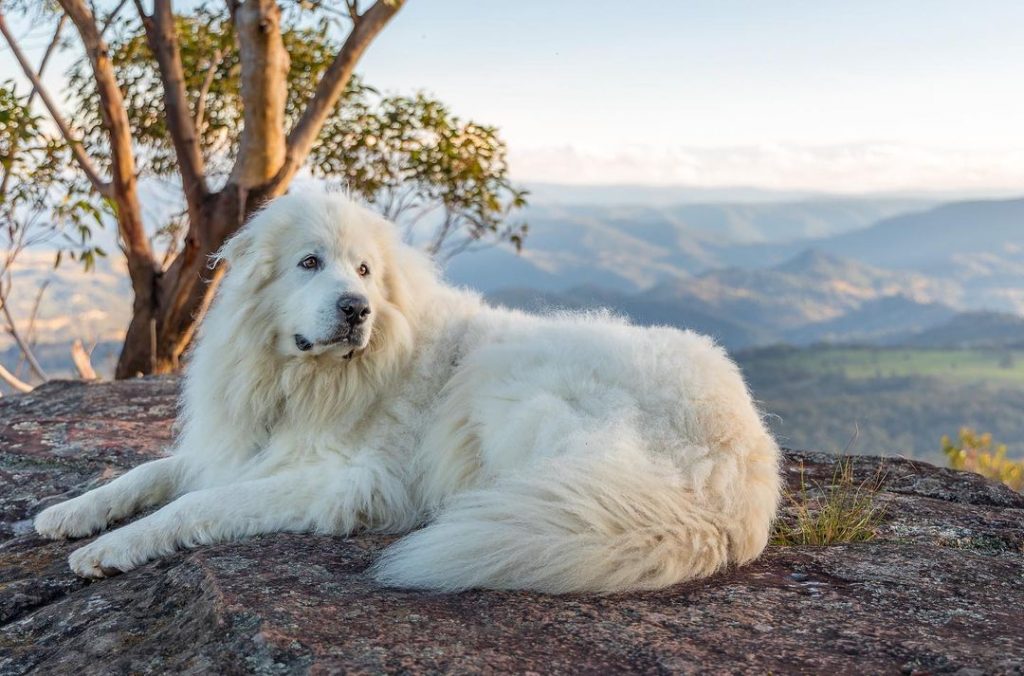
According to genomic information, it belongs to the same genetic lineage as the Pharaoh Hound, Cirneco dell’Etna, as well as the Ibizan Hound. A dog of this kind was introduced to the court of monarch Louis XIV in the seventeenth century by Madame de Maintenon and Louis, Dauphin of France. The dog rapidly became in high demand, and the King reportedly gave it the name “Aristocratic Dog of France”. It was also very popular in Spain.
The French aristocracy eventually began using them to protect their castles, notably in the south of the nation. These canines are allegedly among the ancestors of the Newfoundland dog, having been introduced to Canada by French immigrants, according to some claims. One of the foundational breeds utilized in the development was the Pyrenean Mountain Dog.
The Pyrenean Mountain Dog, commonly referred to as the Great Pyrenees, was brought into North America during the beginning of the 1930s. Both in Canada and the US, the breed rose to popularity in the show ring.
The American Kennel Club created a new breed standard in 1935 that differed significantly from even the French original and was thus prohibited in France. Later, the British Kennel Club adopted this standard, which encouraged the amplification of specific physical characteristics at the cost of functional shape.
The British Pyrenean Mountain Dog breed group published a booklet in 2011 instructing show judges not to honor glitzy, bulky, short-muzzled specimens of the breed in an effort to reverse the decline of the breed’s show lines in their nation.
What Two Breeds Make A Great Pyrenees?
They are connected to the Maremmano-Abruzzese and the Hungarian Kuvasz, and were initially developed to aid shepherds in the protection of flocks around 10,000 B.C.
Pyrenean Mountain Dogs are a common breed found in the Pyrenees. In France, it is commonly known as the “Patou”. Because its progenitors, along with those of the Pyrenean Mastiff, were white livestock guardian dogs brought to the region from Asia during the Roman era, it is widely said that the Great Pyrenees is related to the Maremmano-Abruzzese Sheepdog from Italy together with the Kuvasz of Hungary.
What Does The Great Pyrenees Newfoundland Mix Look Like?
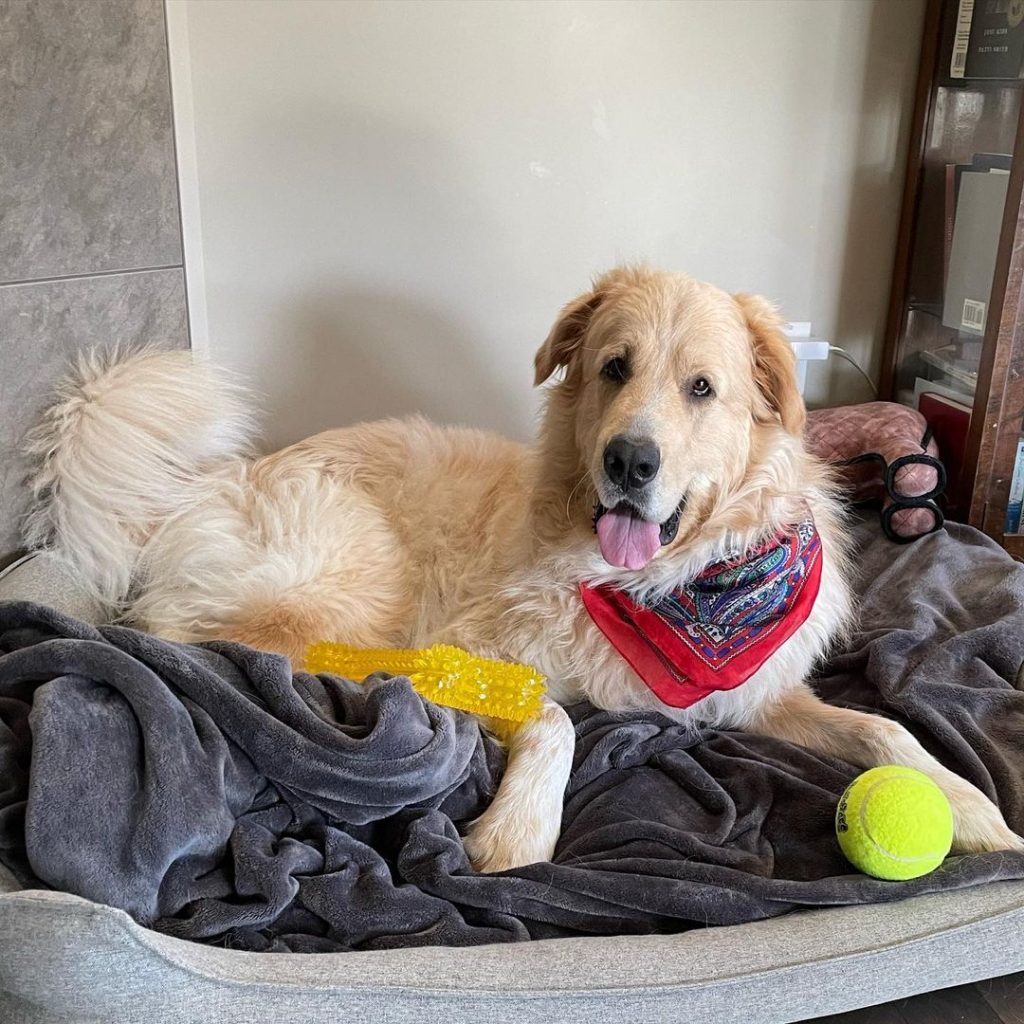
The Great Pyrenees Newfoundland Mix can look like either parent breed. This is a less famous mixed breed. However, the Newfoundland Great Pyrenees mix puppies can resemble any of the parents.
The Newfoundland & the Great Pyrenees Dog both have broad heads, thus the dog that results from crossing the two breeds also has a large head. The mixed dog breed will also have huge round eyes and a big mouth.
The ears of the mixed breed will be longer if it has more Newfie genes than Great Pyrenees genes, as opposed to shorter if it has more Great Pyrenees genes. Depending on whose parent the upper lip takes the most from, it may also be longer or shorter.
They have unique fur, a thick double coat that sticks out towards the side (particularly in the winter), and their fur is distinct. Thanks to the thick double coat, they can live in icy-cold climates, and they won’t even feel a breeze.
They can be in any of the Newfoundland colors or the Great Pyrenees colors, however, the most prominent ones are the pure white or champagne, inherited from the Great Pyrenees dog and the black or chocolate, inherited from the Newfoundland dog.
The Newfoundland Great Pyrenees mix size are known as one of the large dog breeds, going from 25 to 32 inches in height and anywhere from 120 to 200 pounds in weight.
Aside from having this thick double coat which is also, by the way, water resistant, they look like elegant dogs. These majestic dogs will sweep you off your feet with their graceful looks.
Is A Great Pyrenees Bigger Than A Newfoundland?
The Great Pyrenees is a bigger dog breed than the Newfoundland dog.
The Newfoundland dog breed, on average, is around 25-30 inches tall and around 120 to 180 pounds. However, the Great Pyrenees is taller than the Newfoundland dog, because it is around 25-35 inches tall. However, the Great Pyrenees can weigh anywhere from 90 to 170 pounds.
How Big Does A Great Pyrenees Newfoundland Get?
This dog breed being considered as a large dog breed can get almost giant. This crossbreed is, however, bigger than the average large dog breed.
Thanks to the Newf’s strong bodily structure and the Great Pyrenees’ height, this dog can be as heavy as 200 pounds and as tall as 32 inches.
The origins from the Pyrenees mountains made the dog genetically a bit taller and sturdier, combined with the well known genetics of the Newfie, makes this mixed breed dog a great guard dog.
What Kind Of A Personality Does The Great Pyrenees Newfoundland Mix Have?
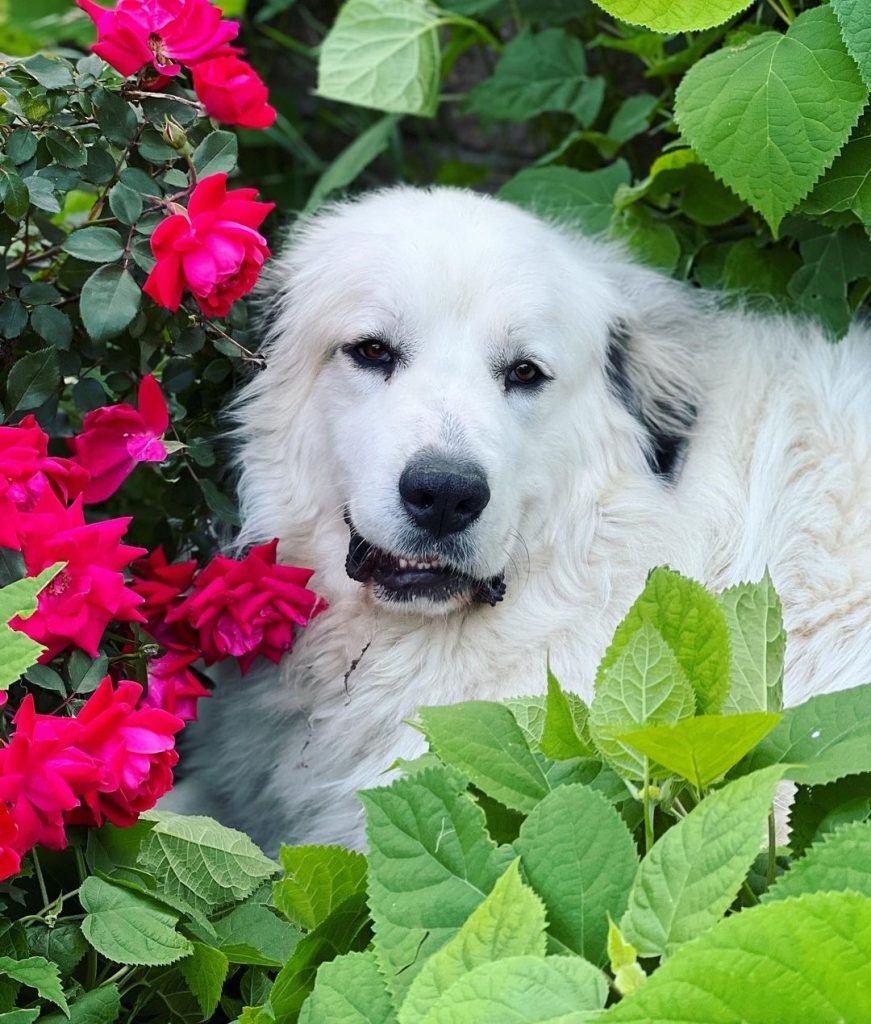
In terms of huge dogs, Pyrenees & Newfies are both slower breeds. They enjoy lounging around the home after a tiring walk or spending hours on the couch. You won’t need to be concerned about them roaming about aimlessly and damaging furniture or leaping all over visitors.
The Pyrenees were raised to guard sheep, thus they mastered the art of conserving energy by being quiet until a battle or other aggressive situation called for them. Because of their innate character, they can be aggressive against outsiders and are very loyal to their owners.
That hatred manifests as unwavering allegiance to the source of their food. A Pyrenees puppy is both a bodyguard as well as a best friend that you may adopt. Whatever, because of their innate callings, they won’t be very receptive to obedience instruction and will often behave however they like.
It is simpler to instruct Newfies. They had to learn how to save people because it was one of their initial jobs, so they had to be extremely adaptive and accommodating. They are a little bit more spirited than Pyrenees and won’t be as slothful. If you want to train the Great Pyrenees, you will definitely need some advice from an expert.
Having in mind all of these traits of the parent breeds, this mixed breed dog results in a great personality. When you take a closer look on these traits, you can conclude that this dog breed can make a great family dog. They have this embedded need to save, guard and generally be around people, which makes it one of the best dogs ever.
What Kind Of Temperament Does The Great Pyrenees Have?
The mentality and temperament of the Great Pyrenees is a dynamic fusion of the watchful, clever guard dog and the submissive, devoted homebody. They are popular due to this exact combination. Although they have charming, cuddly, and friendly traits, you can count on them to be watchful around children or the house.
These canines are working class, therefore their intellect results in independence and intransigence. By design, they are lone wolves, and they frequently behave as such, yet families are where they truly shine.
These puppies need socialization from a young age, but they are not likely to be scared of humans or timid around other dogs. In reality, their tenacity and independence inspire an attitude of “I can do anything” confidence. They are aware of the world and prepared for it.
The Great Pyrenees is the ideal huge dog if you want one that is both obedient and protective. Do take notice that many of their workaholic tendencies have been replaced with homebody ones, and they sometimes lack the same powerful excitement for the outdoors as other livestock or working dogs. Your Great Pyrenees is not a serious outdoor companion.
Is The Great Pyrenees Newfoundland Mix A Healthy Dog Breed?
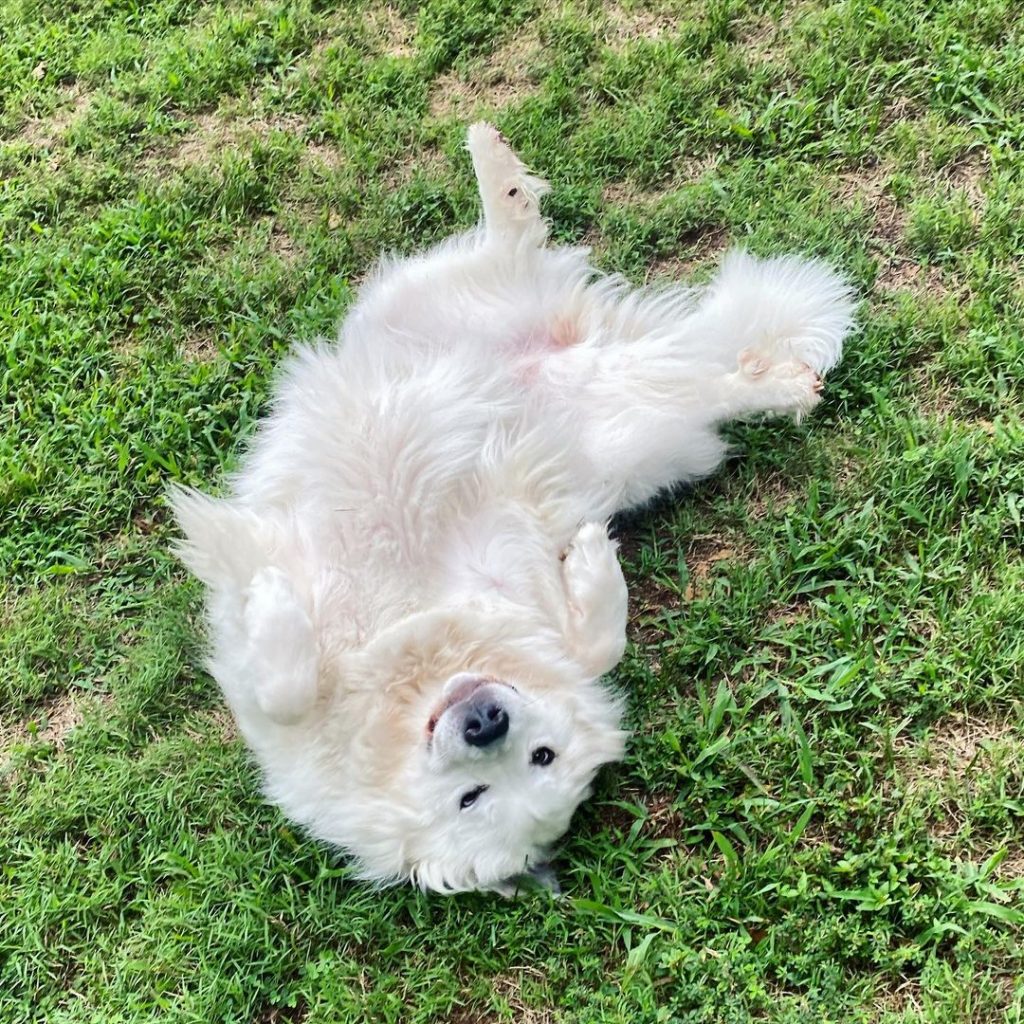
These two parent breeds don’t really suffer from any particular genetically inherited health issue. Therefore, the Great Pyrenees Newfoundland mix is a healthy dog breed, when bought from a reputable breeder.
The only thing that they can suffer from is the Hip and elbow Dysplasia. This is a highly common health issue amongst the large dog breeds. The most prevalent orthopedic problem that affects dogs is hip and/or elbow dysplasia. Any size dog, even cats, may be affected by this illness, albeit it most frequently affects huge and enormous breeds.
Hip dysplasia is a condition in which the hip joint grows and develops abnormally. A “ball and socket” joint is the hip joint. The socket, or acetabulum, is a piece of the pelvic bone. The femur head normally fits into the acetabulum extremely firmly. Hip dysplasia results in an unstable joint because the parts do not fit tightly together. The joint will therefore slide a bit out of its socket.
Other than hip and elbow dysplasia, this dog breed is a healthy one, with a fairly long lifespan. Their lifespan is from 10-12 years on average.
Grooming: How To Take Care Of The Great Pyrenees Newfoundland Mix?
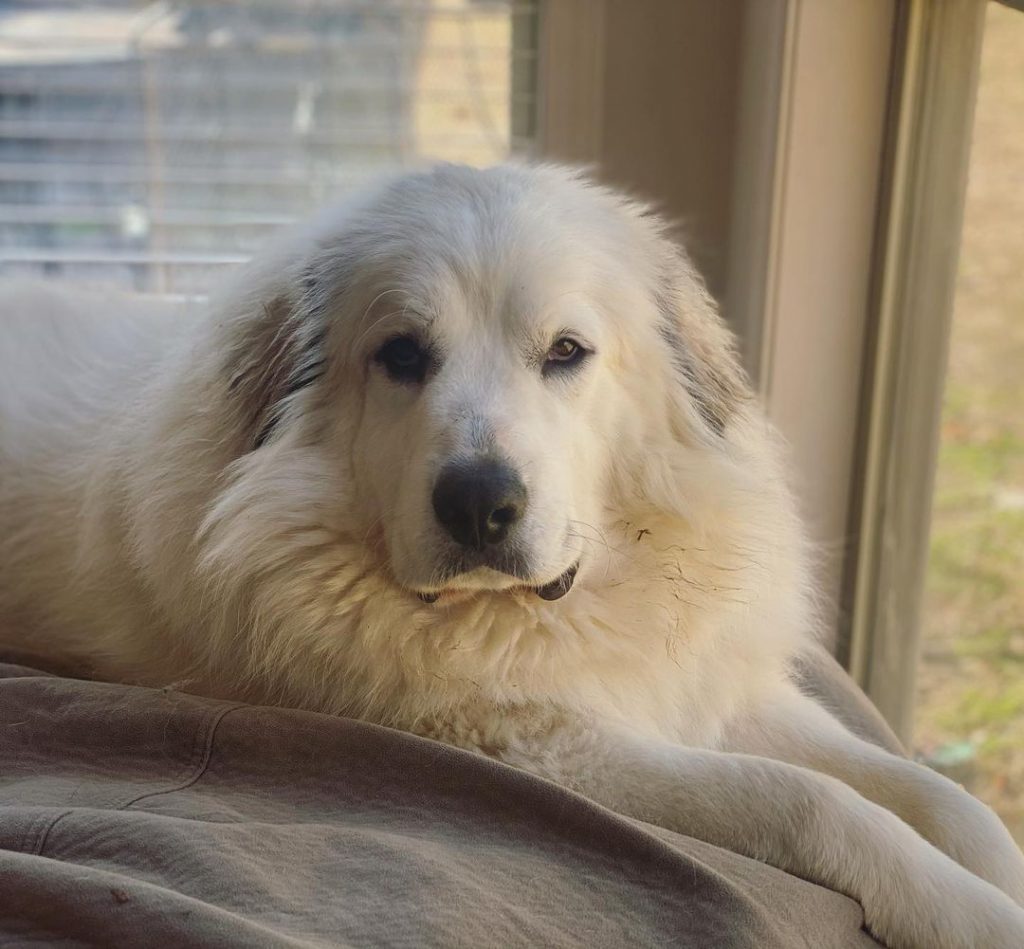
To get rid of plaque accumulation and the germs that lie inside it, brush your Newfoundland dog’s teeth at least twice or three times every week. Even better than twice-daily brushing is prevention of foul breath and gum disease.
Unless your dog doesn’t grow his nails down naturally, trim them about once a month to avoid unpleasant rips and other issues. They are excessively lengthy if you can notice the ground clicking under them.
Dog toenails contain blood arteries, so if you cut them too deeply, bleeding may occur. Ask a veterinarian or groomer to perform it for you if you don’t feel uncomfortable doing it yourself.
Every week, you should examine his ears for redness or an unpleasant smell that might be an infection. To help avoid ear infections, clean your dog’s ears when you examine them using a cotton ball soaked in a mild, pH-balanced ear cleanser. Simply wipe the outer ear; avoid inserting anything in the ear canal.
As soon as your Newfoundland Great Pyrenees puppy is old enough, start exposing him to brushing and examinations. Dogs are sensitive when it comes to their feet, so handle his paws regularly and examine his lips.
Make brushing enjoyable, rewarding, and full of praise, and you’ll create the framework for simple veterinarian examinations and other procedures when he becomes an adult.
Clear eyes without any redness or discharge are ideal. You may identify any health issues early on thanks to your thorough weekly exam.
When grooming your Great Pyrenees Newfoundland mix, you should use a good dog hairbrush, and gently detangle the coat. Do this at least twice a week, and you’re good to go. I also recommend getting your dog professionally groomed every 6 to 8 weeks.
What Kind Of Coat Does A Newfoundland Have?
The dog’s intense longing to be in the water is ideally suited by the coarse, flat outside coat’s oily, water-resistant characteristics. Year-round hair loss is caused by the soft, thick undercoat, which needs regular combing. Black, black with white, and brown with white spots on the chest & tail tip are indeed the traditional Newfoundland colors.
The double coat of the Newfoundland is flat and water-repellent. Long and coarse on the outside, soft and thick on the inside. A moderate amount of shedding happens, with the most of it happening mostly in spring and autumn months.
Both the Newfoundland dog and the Great Pyrenees dog shed great amounts of hair, even when regularly brushed and groomed. Between two and three times every week, brush his gorgeous, thick coat. Give him a bath somewhere between one and two months, or as needed.
Given how difficult it is to properly groom a Newfoundland, many owners choose to engage a professional. You should however continue to brush often. Like many canines with thick coats, the Newfoundland is prone to becoming filthy. You should anticipate dirty paws, burrs or leaves trapped inside the coat, and excrement on the back quarters.
Final Word
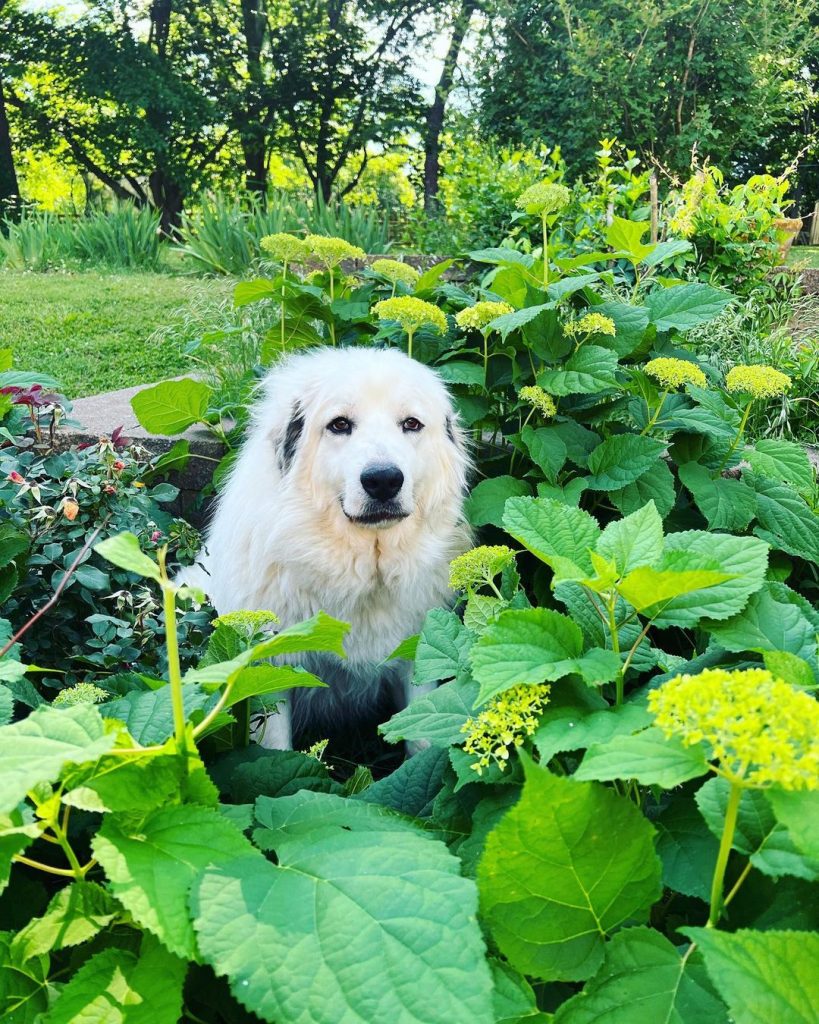
The parent breeds of the Great Pyrenees Newfoundland mix differ subtly, however mostly particularly in terms of their dietary preferences, energy requirements, and activity requirements.
Even though getting a large dog may need more effort than you anticipated, the whole family will love having a gigantic pet. Particularly if you are purchasing a cross of these two famous dog breeds.
This is the dog for you if you need to protect your family and have a large property. You can’t go wrong with them if you have a large lake in your backyard and wish to teach a dog to watch over your children. If this is the choice you make, you’ll have one of the best guard dogs out there.
They have great, devoted personalities and a general friendly attitude towards all of the family members. They are, however, a bit careful around strangers and may need some time to warm up to them.
They come from purebred parent breeds which are AKC approved: one from the island of Newfoundland and the other from the Pyrenees mountains.
